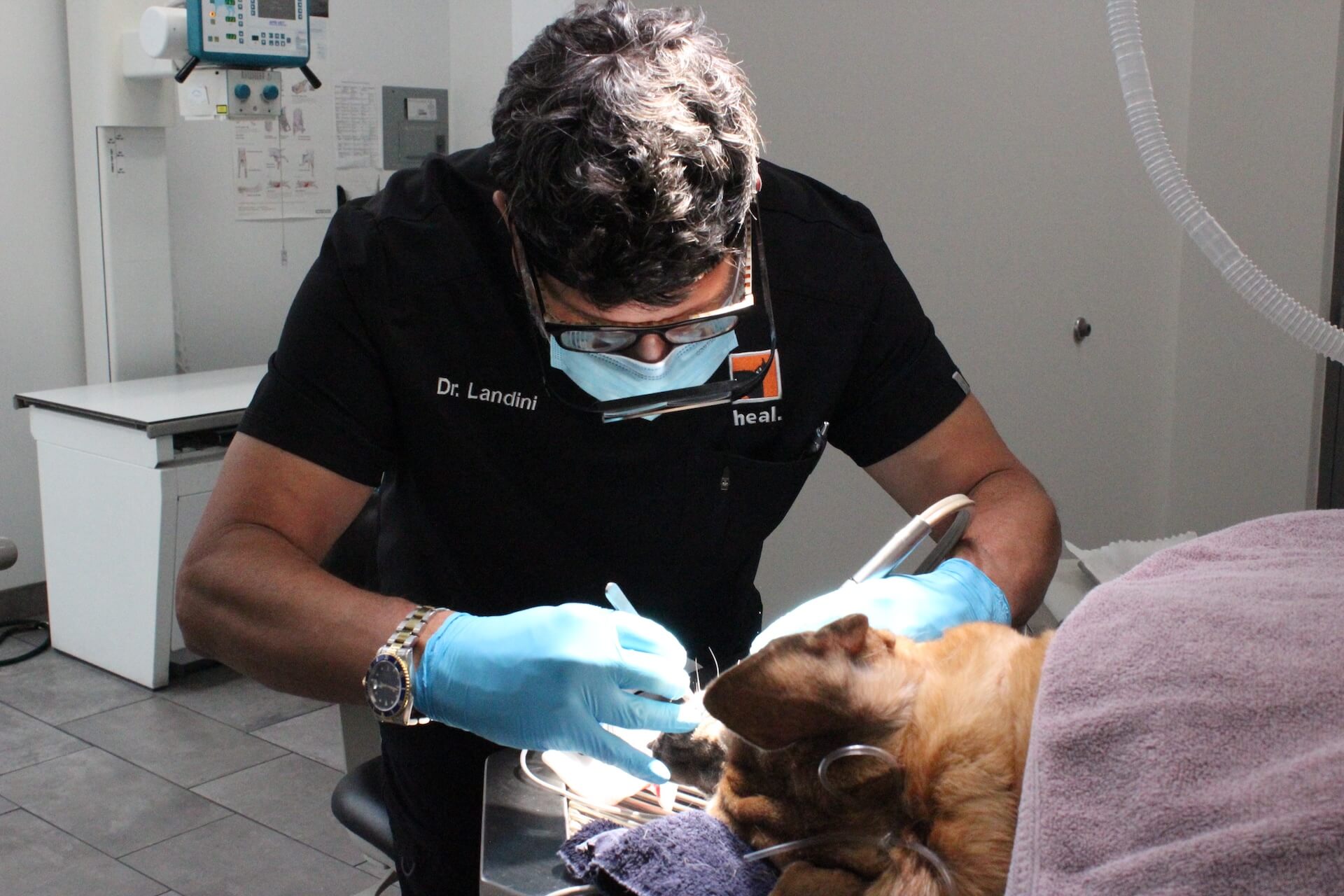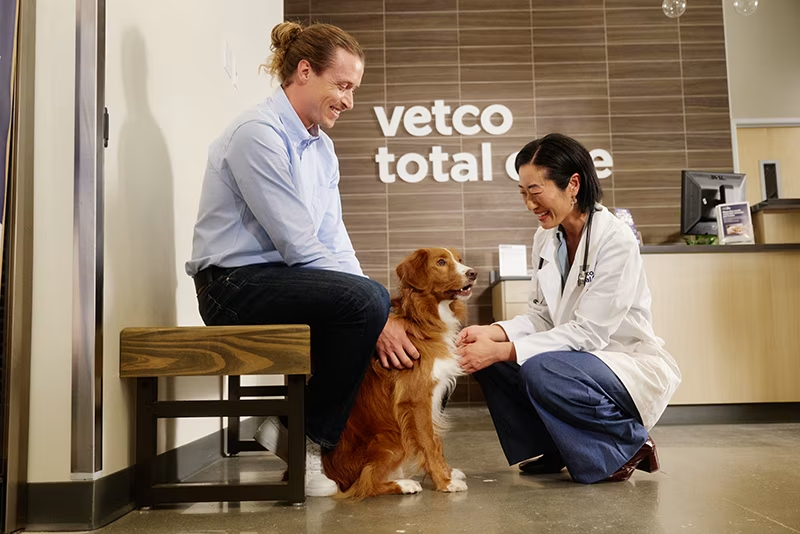A Veterinarian’s Insight Into Long-Term Outcomes of tplo surgery
A Veterinarian’s Insight Into Long-Term Outcomes of tplo surgery
Blog Article
All Concerning Vet Surgery: Understanding the Value of Specialist Care for Your Pets
Veterinary surgical treatment is an essential component of animal healthcare. It incorporates various procedures, from regular elective surgical procedures to urgent treatments. Comprehending the intricacies of these surgeries can help family pet owners make informed decisions. The prep work, implementation, and recovery stages are important for making certain the health of pets. With proper understanding, owners can browse the complexities of vet treatment. What aspects should be considered before an animal undertakes surgical treatment?
Kinds Of Veterinarian Surgeries
When an animal requires surgical intervention, recognizing the numerous types of vet surgical treatments can aid pet proprietors make educated decisions. Vet surgical treatments can be extensively classified right into three primary types: elective, immediate, and emergency surgeries. Optional surgeries, such as spaying or neutering, are planned treatments that are not instantly dangerous. Urgent surgical treatments, like those for foreign body removal, need to be executed quickly but are not lethal in the minute. Emergency surgical procedures, such as those addressing severe injury or internal bleeding, are vital and call for prompt attention.Additionally, surgeries can differ in intricacy, varying from minimally invasive laparoscopic treatments to extra extensive open surgical treatments. Each type of surgery lugs its very own dangers and recuperation procedures. Understanding these classifications permits pet dog owners to participate in purposeful discussions with vets, bring about much better outcomes for their precious family pets.
Getting ready for Your Pet dog's Surgical treatment
Planning for an animal's surgery includes a complete list to guarantee all essentials are covered. Reliable communication with the veterinarian is vital for comprehending the treatment and any kind of essential pre-operative actions - tplo surgery for dogs. In addition, having clear post-operative treatment directions will help proprietors supply the ideal support for their recuperating pet dogs
Pre-Surgery Checklist Fundamentals
Guaranteeing a smooth surgical experience for a pet requires mindful prep work and interest to information. A pre-surgery list is crucial for pet dog owners to comply with. Verifying the scheduled surgery date and time is vital. Owners need to additionally verify that their family pet has not eaten according to the vet's instructions, usually for 8-12 hours before surgery. Collecting required medical documents, including vaccination background, is essential for the veterinarian's evaluation. It is additionally advisable to prepare a comfy room in your home for the family pet's healing after surgical treatment. Lastly, proprietors need to have a prepare for transport to and from the veterinary center, making certain that the animal is protected and comfy throughout the journey. Adhering to these actions can greatly boost the medical experience.
Interacting With Your Vet

Efficient communication with the veterinarian is vital for an effective surgical experience for pets. Owners must be prepared to discuss their pet dog's medical background, consisting of any pre-existing problems, drugs, and allergies. This info helps the vet evaluate dangers and tailor the surgical plan accordingly. In addition, family pet proprietors ought to ask questions regarding the treatment, anesthesia, and anticipated results to ensure they completely recognize the process. Clearing up any kind of doubts can alleviate anxiousness for both the animal and the owner. It is likewise crucial to communicate any behavioral modifications or concerns observed in the pet dog leading up to the surgery. Eventually, clear discussion cultivates trust fund and partnership, making certain that animals get the best possible care during their medical journey.
Post-Operative Care Instructions
After discussing the procedure with the veterinarian, pet owners must focus on post-operative treatment directions to facilitate a smooth recovery for their animals. These guidelines commonly consist of monitoring the surgical site for indications of infection, such as soreness or discharge. Animals might need to be kept one's cool and confined to stop too much movement that can disrupt healing. Discomfort administration is essential, so proprietors need to follow the vet's support on providing medicines. Furthermore, nutritional restrictions may be suggested to prevent gastrointestinal upset. Regular follow-up appointments are very important to assure correct healing and attend to any concerns. By sticking to these post-operative treatment instructions, animal owners can greatly add to their family pet's healing and overall well-being.
The Surgical Process Explained
The surgery for pet dogs includes vital steps that assure their safety and security and recuperation. Pre-surgery prep work are crucial for lessening dangers, while post-operative care guidelines play a vital duty in advertising healing. Understanding these elements assists pet dog owners navigate the surgical experience much more effectively.
Pre-Surgery Preparations
Before an animal undertakes surgical procedure, a number of essential preparations need to take area to ensure a safe and successful treatment. First, a thorough veterinary assessment is necessary to analyze the pet's overall health and wellness and recognize any possible threats. This may consist of blood examinations, imaging, or various other diagnostics. The vet will certainly likewise go over anesthesia alternatives customized to the pet dog's particular needs. Furthermore, family pet proprietors are usually instructed to keep food and water for a specified time before surgery to decrease the danger of difficulties during anesthesia. It is essential for proprietors to supply a full medical history, consisting of any medicines or allergic reactions, making sure the medical group has all needed information. Correct communication and adherence to pre-surgery standards can substantially enhance the result of the treatment.
Post-Operative Treatment Standards
Correct post-operative treatment is crucial for ensuring an animal's recovery adhering to surgical procedure. After the treatment, pet dogs need to be monitored closely for any type of signs of problems, such as excessive bleeding, swelling, or unusual behavior. It is essential to follow the veterinarian's directions regarding medicines, including painkiller and anti-biotics. Animals need to be kept in a peaceful, comfortable atmosphere to decrease stress and anxiety and advertise healing. Limiting task is vital; short, leashed strolls may be essential, however leaping or running should be stayed clear of. Regular follow-up visits must be scheduled to analyze the recovery process. In addition, the medical website needs to be maintained clean and dry, with any indications of infection reported to a vet without delay. Following these standards enhances recovery outcomes.
Anesthesia and Pain Monitoring
Reliable anesthesia and discomfort management are essential components of vet surgical her response procedure, guaranteeing that animals continue to be comfy and risk-free throughout the procedure. Veterinarians analyze each pet dog's specific demands, taking into consideration elements such as age, weight, wellness standing, and the sort of surgery being performed.Anesthesia procedures usually consist of a mix of pre-anesthetic medicines, induction agents, and inhalant anesthetics, permitting accurate control over the animal's degree of consciousness. Monitoring during surgical procedure is crucial; vets constantly observe vital indications to resolve any prospective difficulties promptly.Pain management methods might involve opioids, non-steroidal anti-inflammatory medications (NSAIDs), and anesthetics, tailored to the animal's particular scenario. This multifaceted approach aids minimize pain and promotes a smoother medical experience. By animal dentist prioritizing reliable anesthesia and pain management, vet professionals improve the total welfare of pets going through procedures, guaranteeing they receive the greatest criterion of treatment.
Post-Operative Treatment and Healing
Adhering to surgical procedure, the focus changes to post-operative treatment and healing, which is crucial for making certain a family pet's safe return to typical tasks. Throughout this duration, pets call for a peaceful, comfy atmosphere to help recovery. Proprietors need to very closely monitor their pets for any signs of pain or unusual behavior.Veterinary guidelines commonly consist of particular instructions associated to medication management, wound treatment, and nutritional adjustments. It is essential to stick to these recommendations to lessen issues and advertise healing. Pet dogs may require to be limited from strenuous tasks, such as running or jumping, during their healing period (emergency vet).Regular follow-up consultations with the veterinarian enable surveillance of the animal's progression and prompt modifications to the treatment plan. Supplying psychological assistance and companionship can likewise boost an animal's healing experience, helping to minimize stress and anxiety and anxiousness. In general, thorough post-operative treatment plays a considerable duty in attaining a successful recuperation
Identifying Issues After Surgery
Just how can pet proprietors identify problems after surgical procedure? Recognition of specific indications is important for ensuring the health of animals during recovery. Typical indicators include excessive swelling, redness, or discharge at the surgical site, which may signify infection. In addition, relentless discomfort, indicated by whining or hesitation to relocate, should motivate immediate interest. Changes in hunger or water consumption can also suggest difficulties; a reduction in these habits may signal pain or distress.Moreover, animal owners need to check their animals for any type of unusual actions, such as sleepiness or difficulty breathing, as these can be indicators of serious issues. Vomiting or looseness of the bowels following surgical procedure may spayed require urgent vet analysis. Acknowledging these issues early can substantially influence a pet dog's recuperation procedure, stressing the relevance of alertness and punctual communication with a veterinarian for any worrying signs and symptoms.
The Function of Vet Professionals in Surgical Treatment
Vet professionals play an important duty in making sure the safety and success of surgical treatments for pets, particularly complying with surgical treatment when keeping track of and care are extremely important. These experts include vets, veterinary service technicians, and assistance staff, all of whom add specialized skills to the surgical process.Before surgical treatment, veterinarians conduct thorough analyses to assess the animal's health, guaranteeing that any underlying conditions are managed. During the treatment, the surgical group gives anesthetic, maintains clean and sterile environments, and keeps track of key indications, very important for reducing risks.Post-operative care is just as substantial; vet professionals observe for problems, take care of discomfort, and guide proprietors on recuperation methods. Their expertise allows them to acknowledge very early signs of distress or infection, making sure timely treatment. Ultimately, the joint initiatives of veterinary specialists in surgical care foster a secure atmosphere, advertising the health of animals throughout the surgical journey.

Often Asked Inquiries
Just how Do I Select the Right Vet Specialist for My Pet?
Picking the best vet doctor includes looking into certifications, checking out testimonials, and reviewing the clinic's atmosphere. It is necessary to reflect on the doctor's experience with specific procedures and their communication style when making a decision.
What Prevail Misconceptions Regarding Vet Surgeries?
Usual false impressions regarding vet surgical treatments include beliefs that they are always high-risk, unnecessary, or only for emergency situations. Several animal proprietors underestimate the benefits of preventive procedures and the ability included in vet surgical treatment.
Just How Much Will My Family pet's Surgical treatment Price?
The expense of a family pet's surgical treatment can vary substantially based on elements such as the kind of procedure, the veterinarian's experience, and geographic place (canine tplo surgery). Normally, costs vary from a couple of hundred to numerous thousand bucks

Can My Pet Dog Eat Prior To Surgery?
Before surgery, it is usually recommended that family pets refrain from eating for a certain period. This fasting helps in reducing the danger of complications during anesthesia. Proprietors should consult their vet for specific guidelines customized to their pet dog's needs.
What if My Family Pet Has Pre-Existing Health Conditions?
When a pet has pre-existing health problems, it's vital for the vet to analyze these aspects prior to surgical treatment. This assessment warranties appropriate safety measures are taken, minimizing threats and optimizing the pet's overall security throughout the procedure.
Report this page